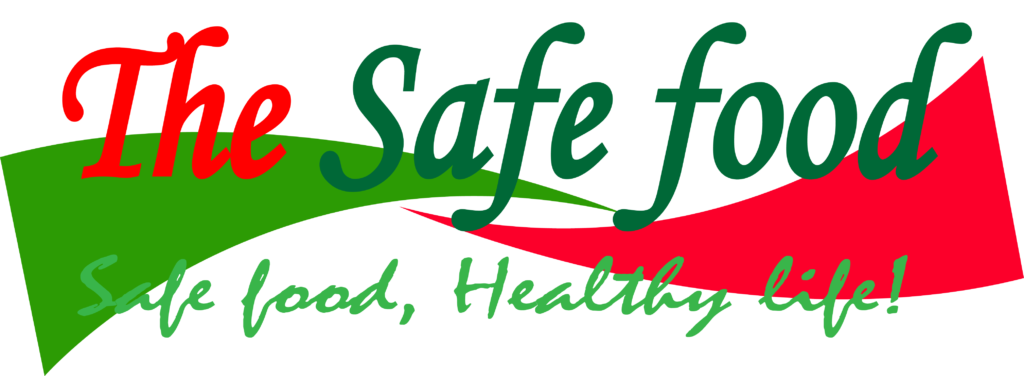
What is covered?
- The significance of water activity (aw) in determining the shelf life and safety of food products.
- The definition of aw and its measurement using a aw meter.
- The relationship between aw and the shelf life of food products.
- The importance of aw in ensuring product safety by inhibiting microbial growth.
- Factors influencing aw in food, such as moisture content, temperature, solutes, pH, interactions between components, food structure, and packaging.
- Techniques for controlling aw in food production, including drying, addition of ingredients that bind water molecules (salting and sugar addition), freezing, packaging, humidity control, and formulation adjustments.
- Common methods for measuring aw, such as water activity meters and dew point hygrometers.
- Critical aw levels for different food products, including dried fruits and vegetables, bakery products, canned and preserved foods, confectionery products, and meat and poultry products.
- Regulations and guidelines related to aw in food, set by organizations such as the FDA, IAFP, and IFT.
- The importance of understanding and managing aw for food manufacturers to ensure product quality, stability, and safety.
In the world of food, water activity (aw) is a critical factor that often goes unnoticed by consumers. Yet, it plays a fundamental role in determining the shelf life and safety of our favorite products.
Water activity refers to the amount of moisture available for microbial growth and chemical reactions within a food product.
Understanding how aw affects food is like uncovering the secret behind its preservation. From crispy potato chips to creamy chocolates, aw influences the texture, taste, and overall quality of our beloved snacks. But beyond the sensory experience, aw is also crucial for product safety. It determines the potential for microbial growth, including harmful bacteria and molds.
What is water activity and how is it measured?
Water activity, often abbreviated as aw, is a measurement that quantifies the amount of water available for chemical reactions and microbial growth in a food product. It is expressed as a decimal between 0 and 1, with 0 representing no available water and 1 representing pure water. Unlike moisture content, which measures the total amount of water present in a food, aw specifically focuses on the water that is available for biological and chemical reactions.
Measuring aw involves using a device called a aw meter. This instrument measures the equilibrium relative humidity (ERH) of the air above a sample of the food product. The ERH is the humidity level at which the water in the food is in equilibrium with the surrounding air.
By measuring the ERH, the water activity meter can determine the water activity of the food. This measurement is crucial because it provides valuable information about the food’s potential for spoilage and microbial growth.
In summary, aw is a measurement that quantifies the available water in a food product and is measured using a aw meter.
The relationship between water activity and shelf life
Water activity (aw) plays a significant role in determining the shelf life of food products. The higher the aw, the shorter the shelf life, as it provides a favorable environment for microbial growth and chemical reactions that can lead to spoilage. On the other hand, lowering the aw can extend the shelf life of a product by inhibiting microbial growth and reducing the rate of chemical reactions.
Microorganisms, such as bacteria and molds, require water to survive and reproduce. By reducing the aw, the amount of available water is decreased, making it more difficult for microorganisms to grow and multiply.
Additionally, certain chemical reactions, such as oxidation and enzymatic browning, are accelerated in the presence of water. By controlling the aw, these reactions can be slowed down, preserving the quality of the food product.
It’s important to note that different food products have different aw requirements for optimal shelf life. For example, dried fruits typically have a aw below 0.6 to prevent the growth of molds, while bread may have a higher aw to maintain its desired texture. Understanding the relationship between aw and shelf life is essential for food manufacturers to ensure their products remain safe and enjoyable for consumers.
The importance of water activity in product safety
Water activity is a critical factor in ensuring the safety of food products. Microorganisms, including bacteria and molds, require water to grow and reproduce. By controlling the water activity, the growth of these microorganisms can be inhibited, reducing the risk of foodborne illnesses.
Pathogenic bacteria, such as Salmonella and E. coli, thrive in environments with high water activity. These bacteria can cause severe illnesses when consumed, leading to symptoms such as diarrhea, vomiting, and abdominal pain. By lowering the water activity, the potential for microbial growth and the risk of contamination can be significantly reduced.
In addition to bacteria, molds are also a concern in food safety. Molds can produce toxins, known as mycotoxins, which can be harmful when ingested. By controlling the water activity, the growth of molds can be prevented, reducing the risk of mycotoxin contamination.
Overall, water activity is a crucial factor in ensuring the safety of food products by inhibiting the growth of pathogenic bacteria and molds.
Factors that influence water activity in food
Several factors can influence the water activity of a food product. These factors can vary depending on the type of food and its composition. Understanding these factors is essential for food manufacturers to control the water activity and ensure the quality and safety of their products. These factors can either increase or decrease the water activity, impacting the microbial growth and stability of the food. Here are some key factors that influence aw in foods:
- Moisture Content: The moisture content of a food product is directly related to its water activity. As the moisture content increases, so does the water activity. Water molecules in the food provide the substrate for microbial growth, so higher moisture content generally leads to higher water activity.
- Temperature: Temperature affects the water activity of food due to its impact on the vapor pressure of water. As temperature increases, the vapor pressure also increases, resulting in higher water activity. Conversely, lowering the temperature decreases the water activity. Controlling temperature is important in food storage and processing to maintain the desired water activity and inhibit microbial growth.
- Solutes: The presence of solutes, such as sugars and salts, can significantly influence water activity. Solutes bind water molecules, reducing their availability for microbial and chemical reactions. This reduces the water activity of the food product. High concentrations of solutes can lower the water activity and inhibit microbial growth, which is why techniques like salting, sugaring, or brining are used for preservation.
- pH: The pH level of a food product can affect water activity. pH is a measure of the acidity or alkalinity of a substance. Some microorganisms thrive in specific pH ranges, and changes in pH can impact their ability to grow. pH can also influence the water-holding capacity of food, affecting the availability of water for microbial and chemical reactions.
- Interactions between Components: The interactions between different components in a food matrix can influence water activity. For example, the presence of proteins or fats can bind water molecules and lower water activity. Conversely, certain carbohydrates can have a water-binding effect and increase water activity.
- Food Structure: The structure and texture of a food product can affect its water activity. Porous or fibrous structures can create microenvironments with varying water activity levels. This can impact the growth of microorganisms and the overall stability of the food product.
- Packaging: The packaging material and its permeability to water vapor can impact the water activity of a food product. Packaging materials with low water vapor permeability can help maintain a lower water activity and preserve the quality and shelf life of the food.
Controlling water activity in food production
Controlling aw in food production is essential to ensure the quality, safety, and shelf life of products. Food manufacturers employ various techniques to control water activity and create products that meet consumer expectations. Here are some common methods used in food production:
- Drying: Drying is a widely used method to reduce aw in foods. It involves the removal of water through various techniques such as air drying, sun drying, freeze-drying, spray drying, or dehydrating. By reducing the moisture content, the water activity decreases, inhibiting microbial growth and extending the shelf life of the product. Dried products, such as jerky and dried fruits, have a longer shelf life due to their low water activity.
- Addition of ingredients that bind water molecules. Sugar, salt, and other humectants can reduce the amount of available water, limiting microbial growth. This is why products like jams and pickles, which have high sugar or salt content, can be stored for extended periods.
- Salting: Adding salt to food products is an effective way to control water activity. Salt binds water, making it less available for microbial growth. It creates a hypertonic environment that can inhibit the growth of spoilage and pathogenic microorganisms. Salting techniques include dry salting, brining, or incorporating salt in a product formulation.
- Sugar Addition: Sugar acts as a humectant and lowers aw in food products. It binds water molecules, reducing the water activity and inhibiting microbial growth. Techniques such as sugaring, syrup formation, or incorporating sugar in food formulations are used to control water activity.
- Freezing: Freezing is a method that lowers water activity by converting water into ice. Most microorganisms cannot grow at low temperatures, and freezing inhibits their growth. While freezing is not a method of water activity control during storage, it is often used in combination with other methods to preserve the quality and safety of food products.
- Packaging: Proper packaging plays a significant role in controlling water activity. Impermeable packaging materials can prevent moisture exchange between the product and the environment, thereby maintaining the desired water activity. Vacuum packaging, modified atmosphere packaging (MAP), and moisture barriers are commonly used packaging techniques to control water activity.
- Humidity Control: Controlling the relative humidity (RH) in food processing and storage environments can help manage water activity. By maintaining a specific RH, it is possible to control the moisture content and water activity of the surrounding air, influencing the product’s water activity. This can be achieved through dehumidification or humidification techniques.
- Formulation and Recipe Adjustments: Food formulations can be modified to control water activity. Adjusting the ratio of ingredients, including moisture-binding components or using hydrocolloids, can help regulate water activity. Recipe modifications can be tailored to specific food products to achieve the desired water activity levels.
By implementing these control measures, food manufacturers can ensure that their products have the desired water activity level, leading to longer shelf life and improved product safety.
Common methods for measuring water activity
Measuring water activity is crucial for food manufacturers to ensure the quality and safety of their products. Several methods are commonly used to measure water activity, each with its advantages and limitations.
The most widely used method is the use of a water activity meter. These devices measure the equilibrium relative humidity (ERH) of the air above a food sample and provide a direct measurement of water activity. Water activity meters are quick, accurate, and easy to use, making them the preferred choice for many food manufacturers.
Another method is the use of a dew point hygrometer. This instrument measures the temperature at which dew forms on a surface, which is directly related to the water activity of the food. While not as commonly used as water activity meters, dew point hygrometers can provide reliable measurements.
Other methods, such as the salt solution method and the pressure transducer method, can also be used to measure water activity. These methods involve creating a salt solution or applying pressure to the food sample and measuring the resulting water activity. While these methods are less commonly used in industrial settings, they can be suitable for research purposes or when water activity meters are not available.
Regardless of the method used, it is essential to calibrate the measuring device regularly to ensure accurate and reliable measurements.
Food safety knowledge is for all!

Every consumer deserves to have high quality and safe food. …Read more!

Understanding the critical water activity levels for different food products
Different food products have different water activity requirements for optimal shelf life and safety. Understanding these critical water activity levels is crucial for food manufacturers to ensure the quality and stability of their products. Let’s take a closer look at some common food categories and their corresponding water activity requirements.
- Dried fruits and vegetables: Dried fruits and vegetables typically have a water activity below 0.6. At this level, the growth of molds and bacteria is inhibited, ensuring an extended shelf life.
- Bakery products: Bakery products, such as bread and pastries, usually have a water activity range of 0.85 to 0.95. This range provides a balance between maintaining moisture and preventing microbial growth.
- Canned and preserved foods: Canned and preserved foods typically have a water activity below 0.85. This low water activity prevents the growth of microorganisms, ensuring the safety and stability of the products.
- Confectionery products: Confectionery products, such as chocolates and candies, often have a water activity below 0.6. The low water activity helps maintain the desired texture and prevents the growth of molds and bacteria.
- Meat and poultry products: Meat and poultry products typically have a water activity below 0.95. This level inhibits the growth of bacteria and extends the shelf life of the products.
Understanding the critical water activity levels for different food products allows food manufacturers to design appropriate processing and packaging techniques to ensure the desired shelf life and safety. However, it is good to remember that water activity alone is not enough. Thus, manufactures employ hurdle technology to ensure preservation.
Regulations and guidelines related to water activity in food
Regulatory agencies and industry organizations have established regulations and guidelines related to aw in foods. These guidelines provide recommendations and standards for food manufacturers to ensure the quality and safety of their products.
One such regulatory body is the U.S. Food and Drug Administration (FDA). The FDA has established regulations and guidelines for specific food categories, such as low-acid canned foods and bakery products. These regulations set limits on water activity to prevent the growth of bacteria and ensure product safety.
Industry organizations, such as the International Association for Food Protection (IAFP) and the Institute of Food Technologists (IFT), also provide guidelines and best practices for water activity control. These organizations promote research, education, and collaboration to advance food safety and quality.
Food manufacturers should familiarize themselves with the relevant regulations and guidelines applicable to their specific products and ensure compliance to meet consumer expectations and regulatory requirements.
Conclusion
Water activity is a critical factor in the preservation, shelf life, and safety of food products. It influences the texture, taste, and overall quality of our favorite snacks, while also determining the potential for microbial growth and spoilage. By understanding the science behind aw in foods, food manufacturers can optimize their production processes, control the water activity, and ensure the desired shelf life and safety of their products.
From measuring water activity using specialized instruments to implementing control measures such as drying, adding ingredients, and proper packaging, food manufacturers have various tools at their disposal to manage water activity effectively.
Regulations and guidelines provide further guidance and standards to ensure food safety and meet consumer expectations. By complying with these regulations and following best practices, food manufacturers can ensure the quality, stability, and safety of their products.
So, the next time you enjoy your favorite snack, take a moment to appreciate the science behind its preservation. Water activity may be an unseen force, but its impact on food quality and safety is undeniable.
Our Blog ↗
Read the latest from our blog
Ask a Question ↗
Ask a question and get answers from our community
Give Feedback ↗
We value your feedback.


